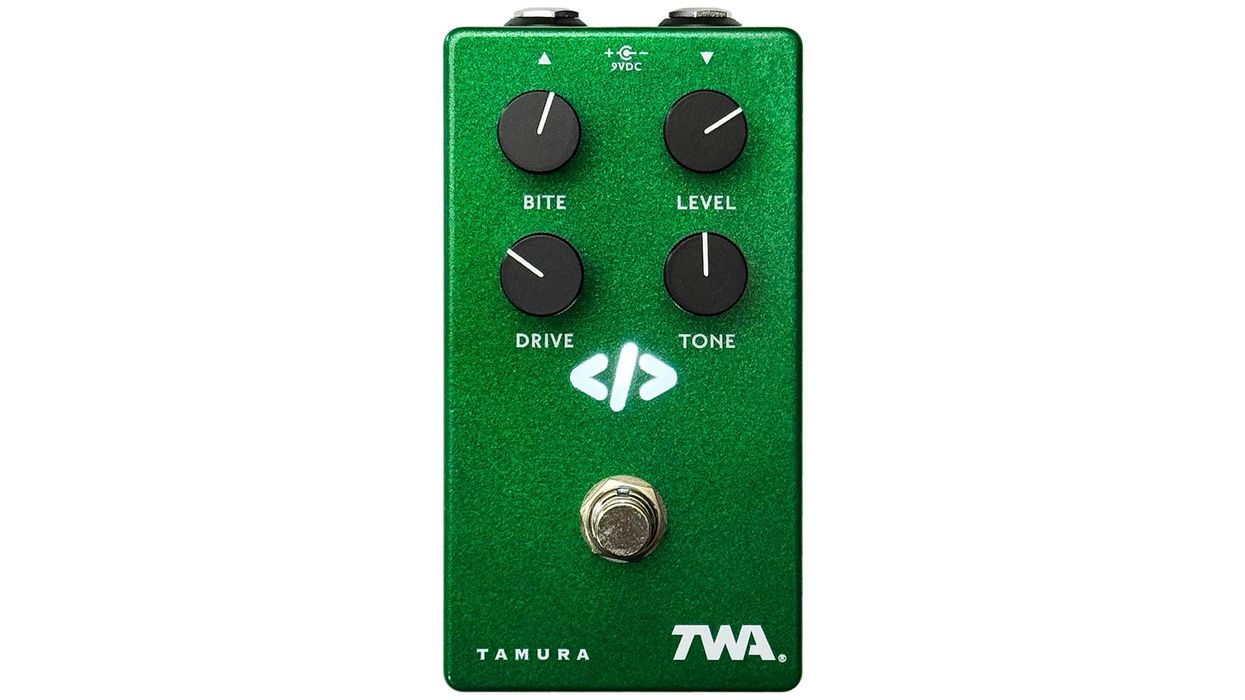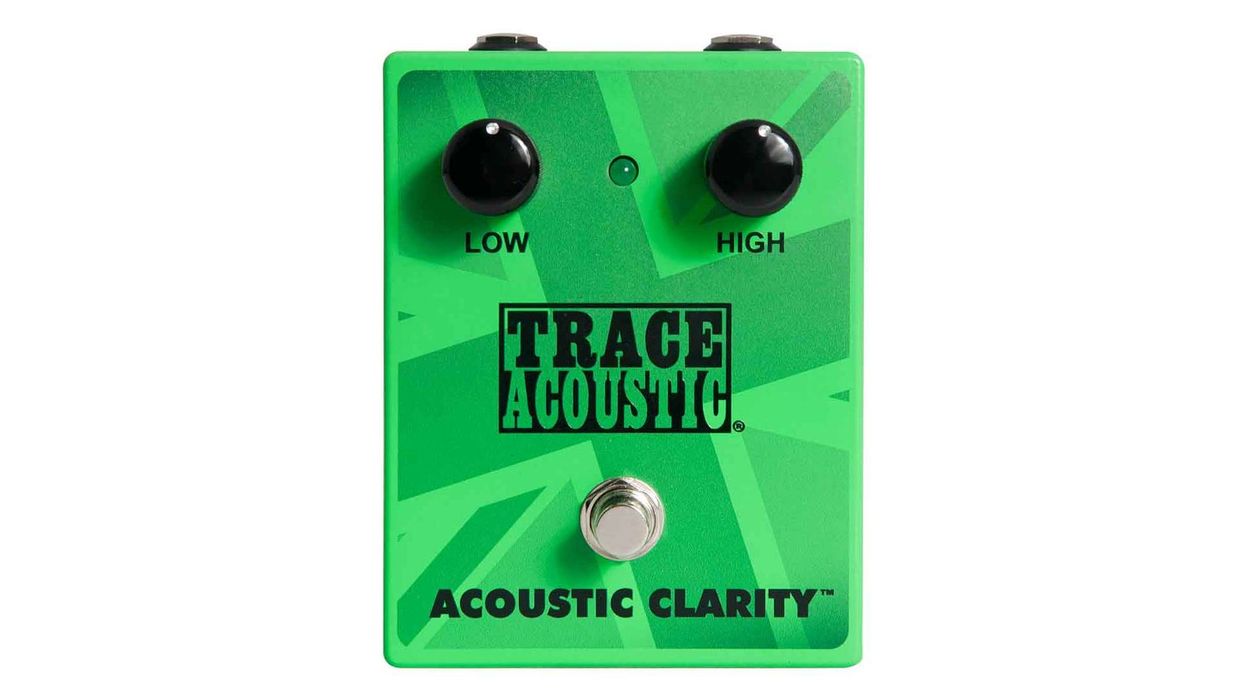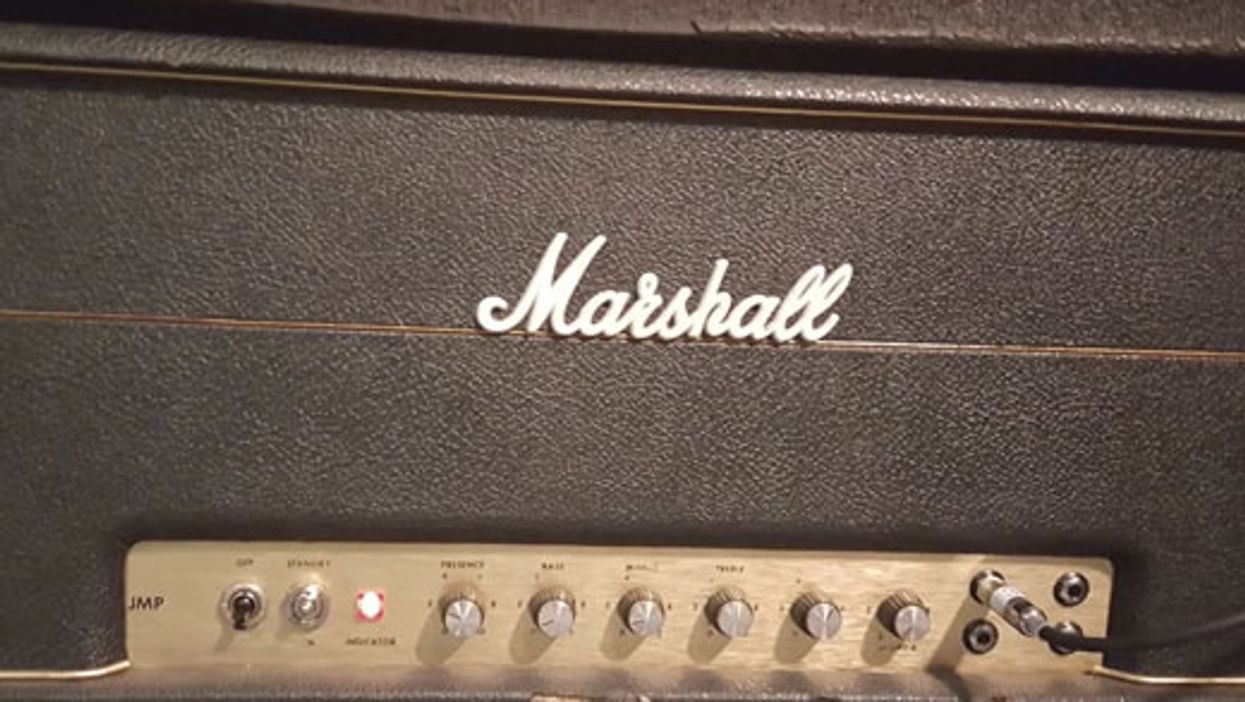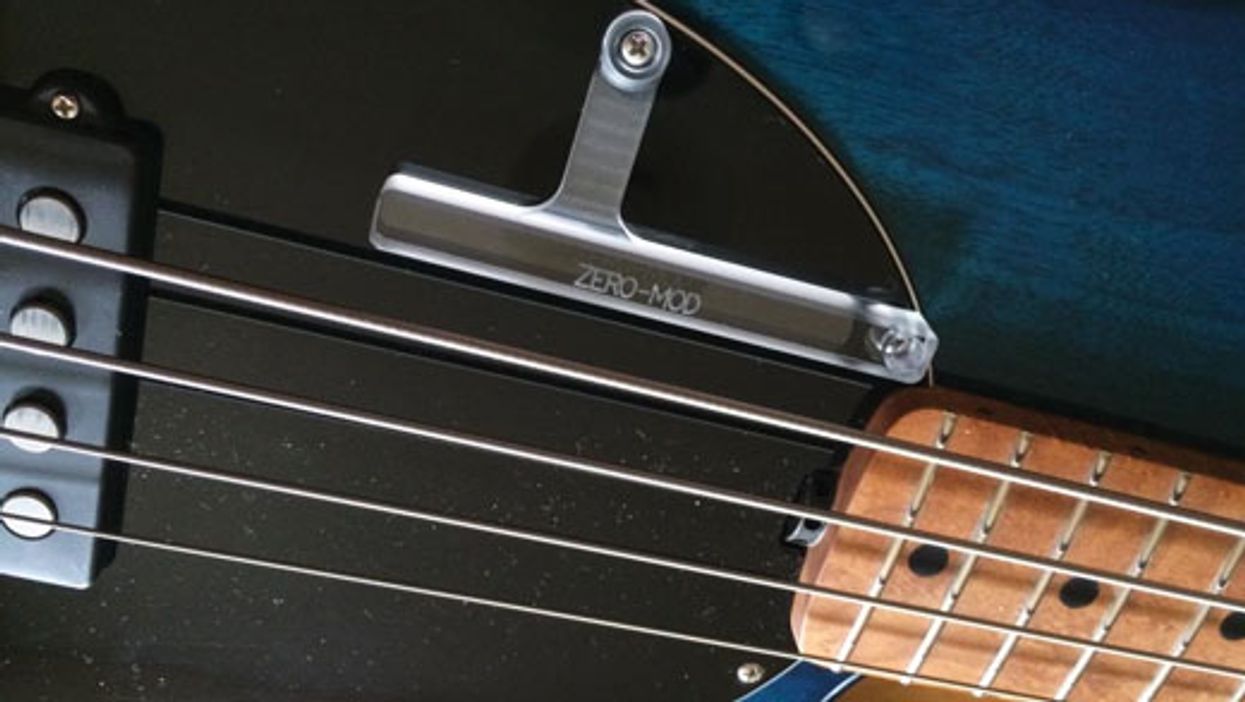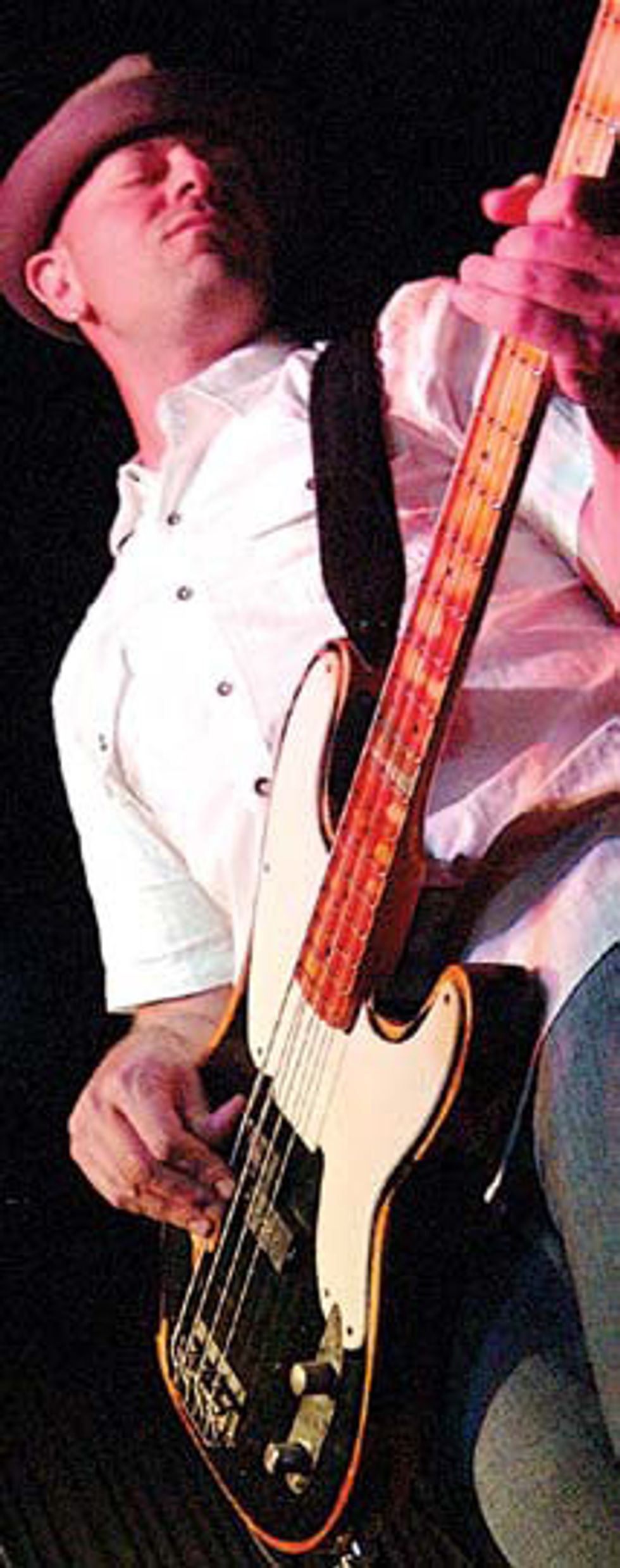
Digging into my $600 Frankenbass— my new number one instrument built up by Nashville Fretworks around a body and neck I scored on eBay.
I hit a wall last year. Not literally, but musically. My tone and my touring basses were just not doing it for me anymore. I woke up one day and I decided to take control of the situation by making a change.
Anyone who knows me knows a couple of sure things. First, I am an old soul who loves tubes, WWII-era planes, and would rather listen to the local AM soul station than FM any day. Second, I am a NAMM junkie. I love just poking around to see what is new and exciting, and absorbing what I can from new products. I don’t go to play my “look-at-me” licks—I’m just there to soak it all in.
With these thoughts in mind, I started making a list of what I really wanted in a bass. I like a certain style, sound, features, pickups, etc., and it needed to remain relatively inexpensive so I wouldn’t be out a fortune (just in case it got used for a cricket match on the tarmac at Heathrow).
I started the search, and before long, I realized that my wants were not off the map— just slightly off the beaten path. I looked into existing models, but they were either really expensive or not exactly what I wanted. I began piecing together this Frankenbass, and after all the parts were shipped to my house, I realized I wasn’t really that innovative—just cheap. But that was one of the requirements.
My first requirement was a slab-style body (i.e., non-contoured). As if divine intervention stepped in, someone on eBay had attempted to relic a slab body with a flathead screwdriver—with less than the desired effect—and he was selling it dirt-cheap. One of the requirements on my list was that my bass needed to look 50 years old, so that was a win. I could work with that.
Next came the neck. I have always loved the thinner, J-bass-style necks because they’re fast, sexy, and feel just right. The problem I was facing with this type of neck was with the Tele-style body I had in mind—the big-ass headstock would look, well, silly. And if I went with the traditional P-bass-style neck, I would just be settling. I didn’t want that.
As fate would have it, yet again, someone on eBay (who had to be reading my mind) took a saw to a licensed J-bass neck and fashioned the headstock down to a Tele-style. Again, who would want such a thing, right? That would be me. The main parts were in-house, so now I just had to get them into the right hands to make this all happen.
I made a call to Shelley over at Nashville Fretworks. Shelley brought a ’75 P bass back from the dead for me (more on that in a later column), and really understands where a player is coming from. After a few conversations and a few more parts coming in, I was forced to sit and wait, since he wouldn’t show me the progress. Instead, he had me wait until completion, like an artist unveiling his work.
When the bass came in, I was floored. Aesthetically, it had everything I wanted. It was fantastic unplugged, but the real test came when I plugged it in. My new bass is big, silly, wonderful, round, and damn sexy. It tracks well, and is now my number one. This little project of mine was a complete success.
Touring gear is expensive, and when you’re on the road, there’s no telling what can happen. When you’re at the mercy of local stagehands or airline employees, you simply have to forget that your instrument could be a pile of splinters when you arrive at soundcheck. That’s what makes this bass so great. Even with the luthier’s fees, this bass came in at about $600 total.
I’m not the first or last person to modify or have a bass built. I’m sure there is a manufacturer out there that is making this bass to these exact specs on the assembly line. Good for them, but this bass is mine and I can truthfully say there are no others like it.
My front-of-house engineer loves this bass, and I get compliments on it everywhere. Yes, it looks like a $15,000 vintage relic—which was sort of the point—but I’m not trying to pull a fast one. I tell everyone who asks how it came to be, and even let most people play it, unless they’ve been making coffee. In that case, they have to wash their hands.
Small variations in our routines can lead to some pretty big results. I went after something a little different and now have a new inspiration, a new tone, and a new sense of accomplishment. All that from a bass? Yes! Well, that’s sort of why we’re playing in the first place, isn’t it? Don’t be afraid to get exactly what you want, and if “they” don’t have it, take control and make it happen.
 Steve Cook is currently
fortifying himself
in the back of a tour
bus, awaiting the low-end
revolution. He can
be reached at info@shinybass.com until the
coast is clear.
Steve Cook is currently
fortifying himself
in the back of a tour
bus, awaiting the low-end
revolution. He can
be reached at info@shinybass.com until the
coast is clear.

